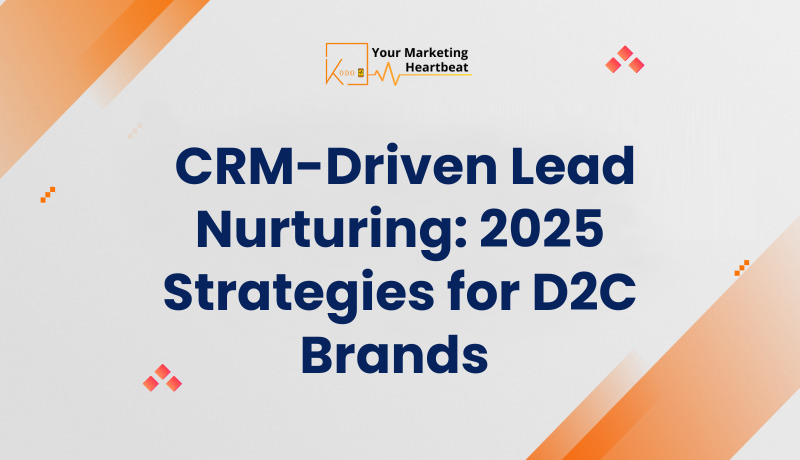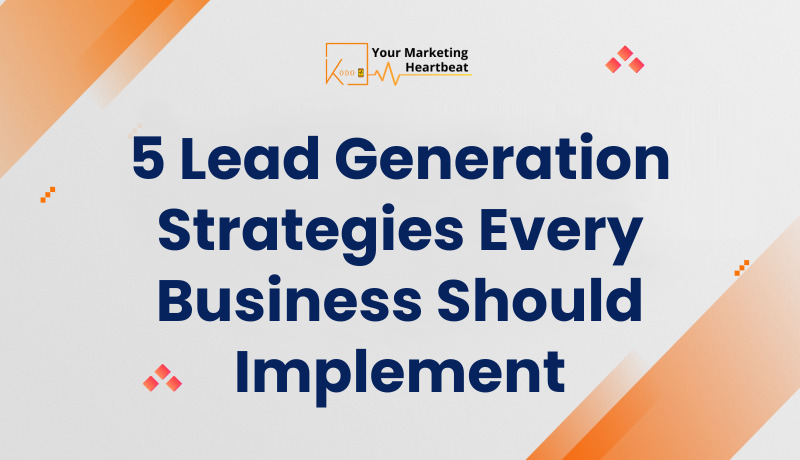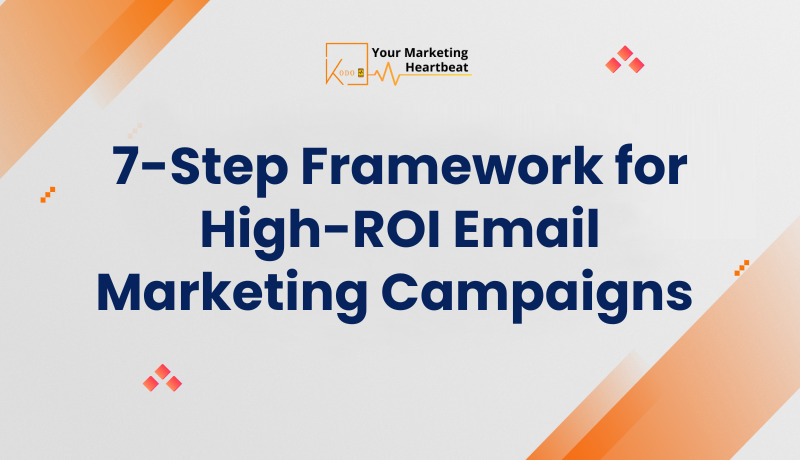
Proven 7-Step Framework to Maximize Email Marketing ROI & Conversions
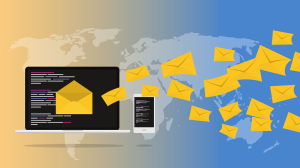
In today’s digital landscape, email marketing remains a powerhouse for businesses seeking to connect with their audience and drive conversions. With an average return of $42 for every dollar spent, it’s clear that email marketing campaigns can significantly boost your bottom line. However, achieving such impressive results requires more than just crafting compelling messages; it demands a strategic approach to email marketing campaign management. In this comprehensive guide, we’ll explore a 7-step framework for email marketing designed to maximize your email marketing ROI and elevate your overall email marketing strategy.
Email marketing’s potential is undeniable, but without proper email marketing management, even the most brilliantly crafted email marketing campaigns can fall flat. Whether you’re a seasoned marketer or just starting out, this email marketing framework will provide you with the tools and insights needed to create, execute, and optimize high-performing email marketing strategies. From setting clear objectives to leveraging advanced analytics, we’ll cover everything you need to know to transform your email marketing efforts into a revenue-generating machine.
Let’s dive into the 7-step framework that will revolutionize your approach to email marketing and set you on the path to achieving exceptional ROI.
Step 1: Define Clear Campaign Objectives
The foundation of any successful email marketing campaign lies in setting clear, measurable objectives. Without a well-defined goal, your efforts may lack focus and direction, ultimately leading to subpar results. Here’s how to establish robust campaign objectives that align with your overall business strategy:
Identify Your Primary Goal
Begin by asking yourself what you want to achieve with your email campaign. Are you looking to:
- Increase sales of a specific product or service?
- Boost engagement with your brand?
- Nurture leads through your sales funnel?
- Re-engage dormant customers?
- Promote a new offering or feature?
Your primary goal will serve as the North Star for all subsequent decisions in your campaign planning and execution.
Set SMART Objectives
Once you’ve identified your primary goal, it’s time to make it SMART: Specific, Measurable, Achievable, Relevant, and Time-bound. For example, instead of a vague goal like “increase sales,” a SMART objective might be:
“Increase sales of our premium subscription plan by 15% among existing customers within the next 30 days through a targeted email campaign.”
This objective is:
- Specific: Focuses on a particular product (premium subscription plan)
- Measurable: Aims for a 15% increase in sales
- Achievable: Targets existing customers, who are more likely to upgrade
- Relevant: Aligns with the overall goal of increasing revenue
- Time-bound: Sets a 30-day timeframe
Align with Business Objectives
Ensure that your email campaign objectives support your broader business goals. This alignment will help you demonstrate the value of your email marketing efforts to stakeholders and justify resource allocation.
Consider Your Audience
When setting objectives, take into account your target audience’s needs, preferences, and behavior. This consideration will help you create more relevant and effective campaigns that resonate with your subscribers.
Setting achievable goals will help maintain team morale and provide a solid foundation for future growth.
By taking the time to define clear, strategic objectives for your email marketing campaigns, you’re setting the stage for success. These objectives will guide your decision-making throughout the campaign process, from content creation to audience segmentation and beyond. Remember, well-defined goals are the first step towards achieving high ROI in your email marketing efforts.
Step 2: Segment Your Audience for Personalized Targeting
Once you’ve established clear objectives for your email marketing campaign, the next crucial step is to segment your audience. Effective segmentation allows you to deliver more personalized, relevant content to your subscribers, significantly increasing engagement and conversion rates. Let’s explore how to implement a robust segmentation strategy that will elevate your email marketing ROI.
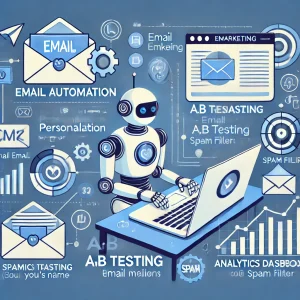
Understand the Importance of Segmentation
Before diving into the specifics, it’s essential to recognize why segmentation is so critical:
- Improved relevance: Tailored content resonates more with recipients, leading to higher engagement.
- Increased open rates: Personalized subject lines based on segment characteristics can boost open rates.
- Higher conversion rates: When subscribers receive offers that match their interests, they’re more likely to convert.
- Reduced unsubscribe rates: Relevant content keeps subscribers interested and less likely to opt out.
- Better sender reputation: Engaged subscribers improve your email deliverability and sender score.
Implement Data Collection Strategies
To segment effectively, you need robust data. Here’s how to gather the information you need:
- Use sign-up forms to collect essential demographic data
- Implement website tracking to gather behavioral data
- Conduct surveys to understand customer preferences and psychographics
- Analyze purchase history from your CRM or e-commerce platform
- Monitor email engagement metrics through your email service provider
Create Segment Profiles
Once you have collected sufficient data, create detailed profiles for each segment. These profiles should include:
- Key characteristics of the segment
- Preferred communication style
- Common pain points or challenges
- Most relevant products or services
Develop Segmentation Rules
Establish clear rules for how contacts will be assigned to different segments. These rules should be:
- Mutually exclusive: A contact should only belong to one segment within a particular category
- Exhaustive: Every contact should be assigned to a segment
- Relevant: Segments should align with your campaign objectives and overall marketing strategy
Ensure GDPR Compliance
When implementing segmentation strategies, it’s crucial to adhere to data protection regulations like GDPR. Ensure that you:
- Obtain explicit consent for data collection and use
- Provide clear opt-out options
- Maintain transparency about how you use subscriber data
- Implement robust data security measures
By following these segmentation best practices, you’ll be well-equipped to create highly targeted, personalized email campaigns that resonate with your audience. Remember, effective segmentation is an ongoing process that requires regular analysis and refinement. As you continue to learn more about your subscribers, you’ll be able to create increasingly sophisticated segments that drive higher engagement and, ultimately, better ROI for your email marketing efforts.
Step 3: Craft Compelling Content and Design
With clear objectives set and your audience segmented, the next critical step in our high-ROI email marketing framework is crafting compelling content and design. This step is where creativity meets strategy, and it’s essential for capturing your audience’s attention and driving them towards your desired action. Let’s explore how to create email content that resonates with your subscribers and supports your campaign goals.
Align Content with Campaign Objectives
Before you start writing, revisit your campaign objectives. Every element of your email content should support these goals. For example:
- If your goal is to increase sales, focus on product benefits and include clear calls-to-action (CTAs) to purchase.
- For lead nurturing, provide valuable educational content that builds trust and positions your brand as an industry authority.
- To boost engagement, create interactive content like polls or quizzes that encourage subscriber participation.
Develop a Strong Value Proposition
Your email should immediately communicate the value it offers to the recipient. Ask yourself:
- What problem does this email solve for the subscriber?
- How does it make their life easier or better?
- Why should they take action now?
Clearly articulate this value proposition in your subject line and opening paragraph to grab attention and encourage further reading.
Write Compelling Subject Lines
The subject line is your first (and sometimes only) chance to capture your audience’s attention. Here are some tips for crafting effective subject lines:
- Keep it concise (40-50 characters is ideal)
- Use action-oriented language
- Create a sense of urgency or exclusivity
- Personalize when possible (e.g., include the recipient’s name)
- A/B test different subject lines to see what resonates best with your audience
Structure Your Email for Scanability
Most people don’t read emails word-for-word; they scan for relevant information. Make your emails easy to digest by:
- Using short paragraphs (2-3 sentences max)
- Incorporating bullet points and numbered lists
- Including subheadings to break up content
- Highlighting key information with bold or italicized text
By focusing on creating compelling, personalized content and pairing it with an appealing, functional design, you’ll significantly increase the chances of your email campaign achieving its objectives. Remember, the key is to provide value to your subscribers while guiding them towards your desired action. Continuously test and refine your approach based on performance data to improve your results over time.
Step 4: Optimize Email Deliverability
Even the most brilliantly crafted email campaign won’t yield results if it doesn’t reach your subscribers’ inboxes. That’s why optimizing email deliverability is a crucial step in our high-ROI email marketing framework. Deliverability refers to the ability of your emails to successfully land in recipients’ inboxes rather than spam folders or being blocked entirely. Let’s explore strategies to ensure your emails consistently reach their intended audience.
Understand Email Deliverability Factors
Before diving into optimization techniques, it’s important to understand the key factors that influence email deliverability:
- Sender reputation: How trustworthy you are as an email sender
- Authentication: Verifying that your emails are legitimate and come from you
- Content quality: The relevance and value of your email content
- Engagement rates: How recipients interact with your emails
- List hygiene: The quality and accuracy of your email list
Build and Maintain a Strong Sender Reputation
Your sender reputation is crucial for deliverability. Here’s how to establish and maintain a positive reputation:
- Warm up new IP addresses gradually by slowly increasing send volume
- Maintain consistent sending patterns
- Monitor and respond to spam complaints promptly
- Avoid sudden spikes in email volume, which can trigger spam filters
- Use a dedicated IP address for high-volume sending
Implement Proper Authentication Protocols
Email authentication helps ISPs verify that your emails are legitimate. Implement these authentication methods:
- SPF (Sender Policy Framework): Specifies which IP addresses are authorized to send emails on behalf of your domain
- DKIM (DomainKeys Identified Mail): Adds a digital signature to your emails to verify they haven’t been tampered with
- DMARC (Domain-based Message Authentication, Reporting & Conformance): Tells receiving servers how to handle unauthenticated emails
Create High-Quality, Relevant Content
Content quality significantly impacts deliverability. Follow these best practices:
- Avoid spam trigger words in subject lines and body content
- Personalize content based on subscriber preferences and behavior
- Ensure all links in your emails are valid and lead to reputable sites
- Use a consistent “From” name and email address that subscribers recognize
By implementing these deliverability optimization strategies, you’ll significantly increase the chances of your emails reaching your subscribers’ inboxes. Remember, deliverability is an ongoing process that requires constant attention and adjustment. Regularly review your deliverability metrics and stay informed about industry best practices to ensure your email campaigns continue to perform at their best.
Step 5: Leverage Automation and Personalization for Smarter Email Marketing
In today’s fast-paced digital marketing landscape, automation and personalization are key to scaling your email marketing efforts while maintaining a high level of relevance and engagement. This step in our high-ROI email marketing framework focuses on leveraging technology to deliver timely, personalized messages that resonate with your audience. Let’s explore how to effectively implement automation and personalization in your email campaigns.
Understand the Power of Email Automation
Email automation allows you to send targeted messages to subscribers based on specific triggers or time intervals. Benefits include:
- Increased efficiency: Automate repetitive tasks and save time
- Improved timing: Deliver messages when they’re most relevant to subscribers
- Consistent communication: Maintain regular contact without manual intervention
- Enhanced personalization: Tailor content based on subscriber behavior and preferences
Develop a Comprehensive Automation Strategy
To create an effective automation strategy:
- Map out your customer journey and identify key touchpoints
- Determine which touchpoints can be enhanced with automated emails
- Create a flowchart for each automation sequence, outlining decision points and content needs
- Set goals for each automated campaign (e.g., increase conversions, improve customer retention)
- Establish KPIs to measure the success of your automation efforts
Personalize Content at Scale
Personalization goes beyond just using a subscriber’s name. Implement these personalization techniques:
- Dynamic content: Adjust email content based on subscriber data or behavior
- Product recommendations: Use AI-powered algorithms to suggest relevant items
- Behavioral targeting: Tailor messages based on past interactions with your brand
- Location-based personalization: Customize content based on the subscriber’s geographic location
- Time-based personalization: Send emails at optimal times for each individual subscriber
Utilize data from various sources to create highly personalized experiences:
- CRM data: Purchase history, customer service interactions, loyalty program status
- Website behavior: Pages visited, products viewed, time spent on site
- Email engagement: Open rates, click-through rates, preferred content types
- Social media interactions: Likes, shares, comments on your brand’s posts
- Survey responses: Preferences, pain points, and feedback provided by subscribers
By implementing robust automation and personalization strategies, you can significantly enhance the effectiveness and efficiency of your email marketing efforts. These techniques allow you to deliver highly relevant, timely content to your subscribers, fostering stronger relationships and driving better results. Remember to continuously test, learn, and refine your approach to ensure your automated campaigns remain fresh and impactful over time.
Step 6: Analyze and Optimize Campaign Performance
In the realm of high-ROI email marketing, continuous improvement is key. This step focuses on leveraging data and insights to refine your email campaigns and boost their effectiveness over time. By implementing a robust analysis and optimization process, you can identify what’s working, what isn’t, and make data-driven decisions to enhance your email marketing performance. Let’s explore how to effectively analyze and optimize your email campaigns.
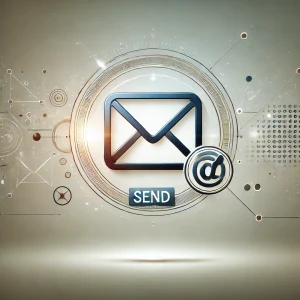
Establish a Comprehensive Measurement Framework
Before diving into analysis, ensure you have a solid measurement framework in place:
- Define key performance indicators (KPIs) aligned with your campaign objectives
- Set up proper tracking and tagging for all email links
- Integrate your email platform with web analytics tools (e.g., Google Analytics)
- Implement conversion tracking to measure the impact on business goals
Monitor Core Email Metrics
Regularly track these essential email marketing metrics:
- Open rate: Percentage of recipients who opened your email
- Click-through rate (CTR): Percentage of recipients who clicked on a link in your email
- Conversion rate: Percentage of recipients who completed a desired action (e.g., purchase, sign-up)
- Bounce rate: Percentage of emails that weren’t delivered to recipients’ inboxes
- Unsubscribe rate: Percentage of recipients who opted out of your email list
- Spam complaint rate: Percentage of recipients who marked your email as spam
Analyze Subscriber Behavior Patterns
Look for patterns in subscriber behavior to inform your strategy:
- Identify your most engaged subscribers and analyze their characteristics
- Determine which types of content generate the highest engagement
- Analyze the customer journey to identify key touchpoints and drop-off points
- Examine how engagement changes based on subscriber lifecycle stage
Email Marketing – Implement Continuous Optimization
Create a systematic process for ongoing campaign optimization:
- Regularly review performance data and identify areas for improvement
- Prioritize optimization efforts based on potential impact and resource requirements
- Develop hypotheses for improvements and design experiments to test them
- Implement successful changes and monitor their long-term impact
- Document learnings and share insights across your team
By implementing a robust analysis and optimization process, you can continuously improve the performance of your email campaigns. Remember that optimization is an ongoing journey, not a destination. Stay curious, be willing to experiment, and always let data guide your decision-making. With this approach, you’ll be well-positioned to achieve and maintain high ROI from your email marketing efforts.
Step 7: Ensure Compliance and Build Trust
In the final step of our high-ROI email marketing framework, we focus on the critical aspects of legal compliance and trust-building. As email marketers, it’s essential to not only follow legal requirements but also to establish and maintain trust with your subscribers. This trust is the foundation of long-term success in email marketing. Let’s explore how to ensure compliance and build trust through your email campaigns.
Understand Relevant Email Marketing Regulations
Familiarize yourself with key email marketing regulations that may apply to your business:
- CAN-SPAM Act (United States)
- Local laws in other countries where you have subscribers
Implement Key Compliance Measures
Ensure your email marketing practices adhere to these common compliance requirements:
- Obtain explicit consent: Use clear opt-in processes for email subscriptions
- Provide easy unsubscribe options: Include a visible, one-click unsubscribe link in every email
- Honor unsubscribe requests promptly: Process opt-outs within the legally required timeframe (e.g., 10 business days for CAN-SPAM)
- Include your physical address: Provide a valid postal address in each email
- Use clear “From” lines: Accurately identify the sender of the email
- Avoid deceptive subject lines: Ensure subject lines reflect the content of the email
- Label advertising content: Clearly identify when an email is an advertisement
Email Marketing – Develop a Robust Privacy Policy
Create a comprehensive privacy policy that outlines:
- What data you collect from subscribers
- Who has access to the data
- How subscribers can access or delete their data
- Your data retention policies
- How you protect subscriber information
Make this policy easily accessible on your website and link to it in your email footer.
Implement Strong Data Security Measures
Protect your subscribers’ data with robust security practices:
- Use encryption for data storage and transmission
- Implement strict access controls for customer data
- Regularly update and patch your systems
- Conduct periodic security audits
- Train your team on data security best practices
Practice Transparency in Data Collection and Use
Be open and honest about your data practices:
- Clearly communicate what data you collect and why
- Explain how you use data to personalize emails
- Provide options for subscribers to control their data preferences
- Be transparent about any data sharing with third parties
Email Marketing – Build Trust Through Consistent Branding
Maintain consistent branding across all touchpoints:
- Ensure your email design aligns with your website and other marketing materials
- Maintain a consistent tone and voice in your communications
Conclusion
A well-structured email marketing strategy is essential for maximizing ROI in 2025. By leveraging email automation, personalization, and list segmentation, businesses can create highly targeted campaigns that drive engagement and conversions. Additionally, ensuring GDPR compliance, optimizing cold outreach templates, and continuously refining strategies through A/B testing and analytics dashboards will help marketers stay ahead of the competition. As email marketing continues to evolve, focusing on quality content, deliverability, and audience preferences will be the key to sustained success.
